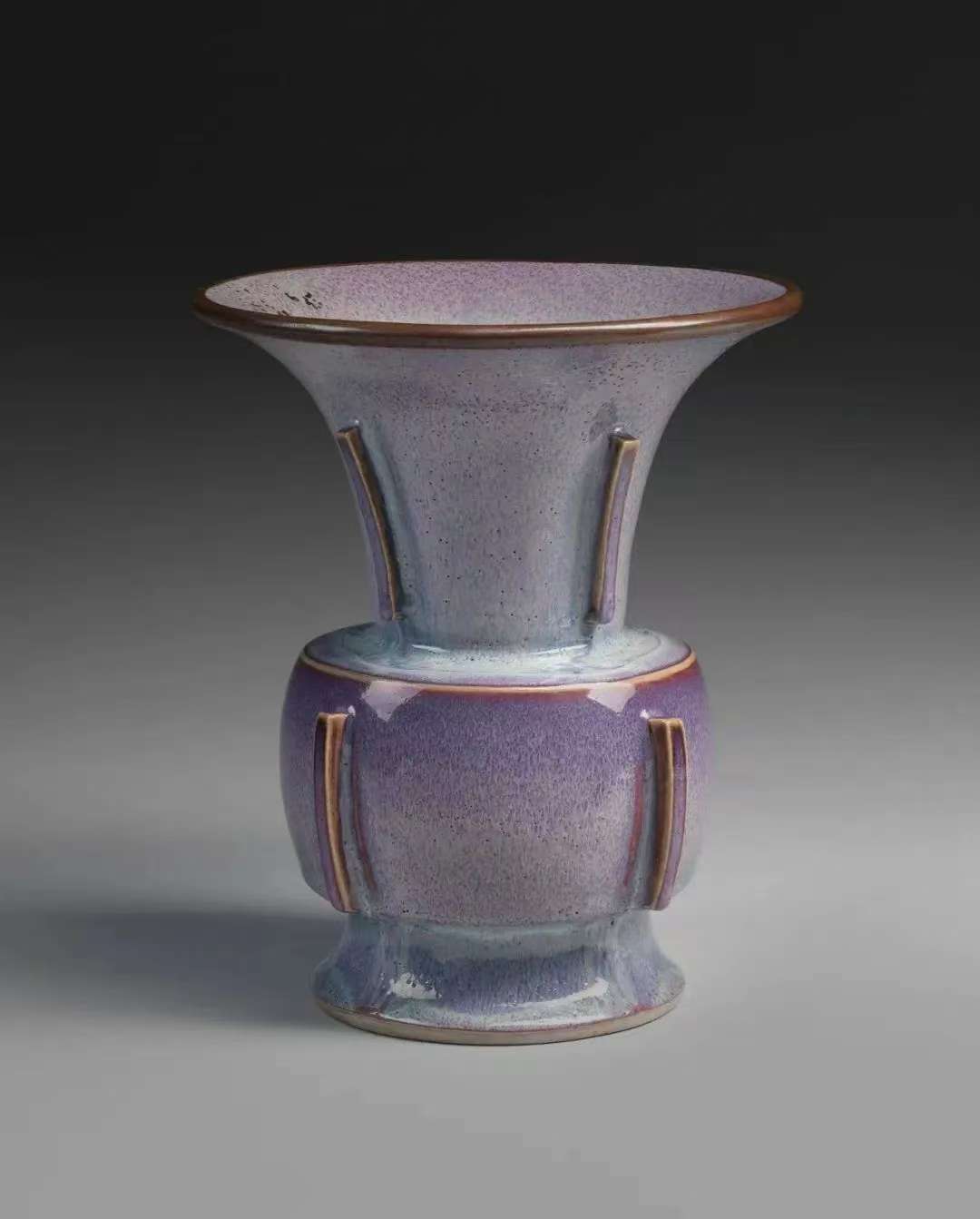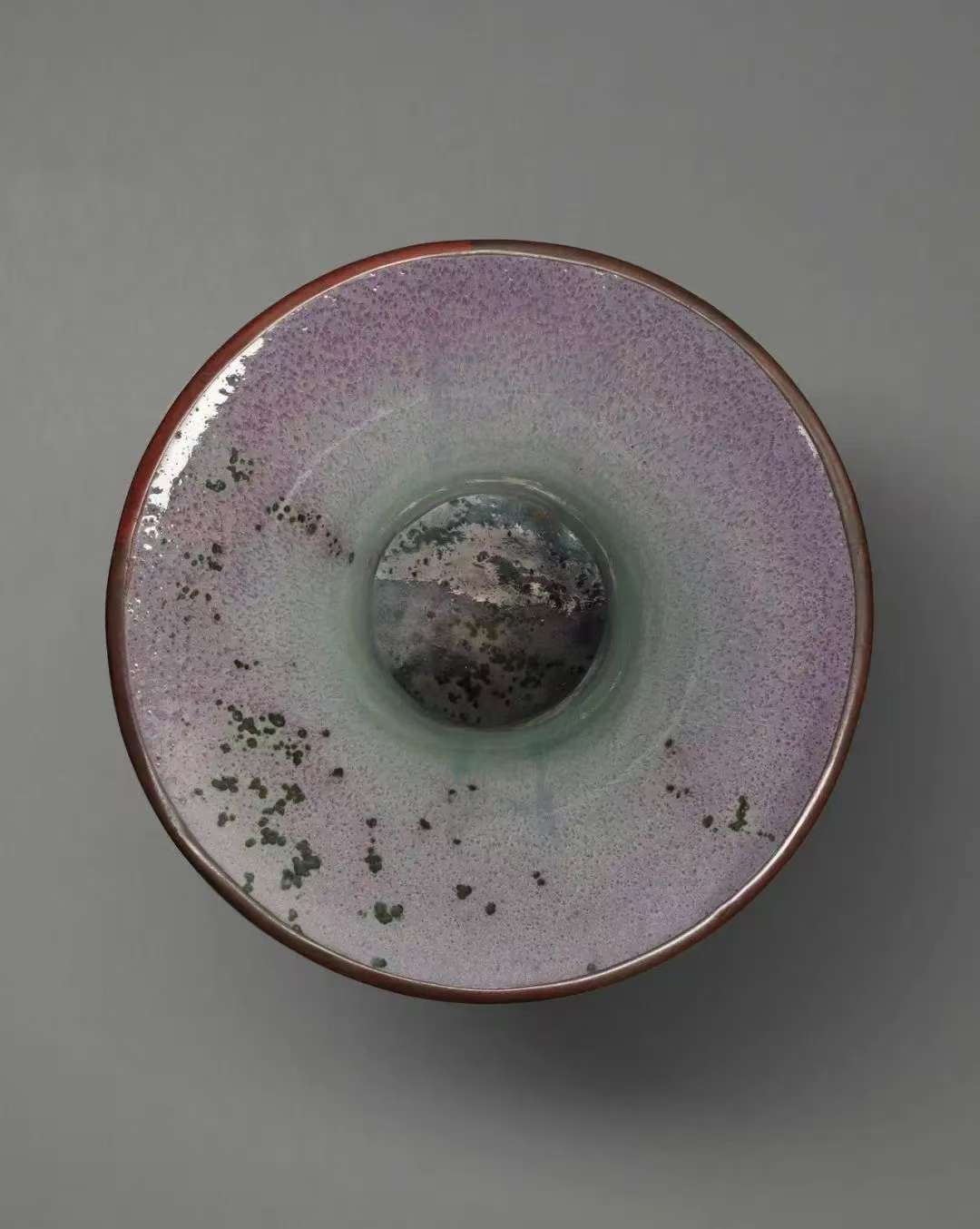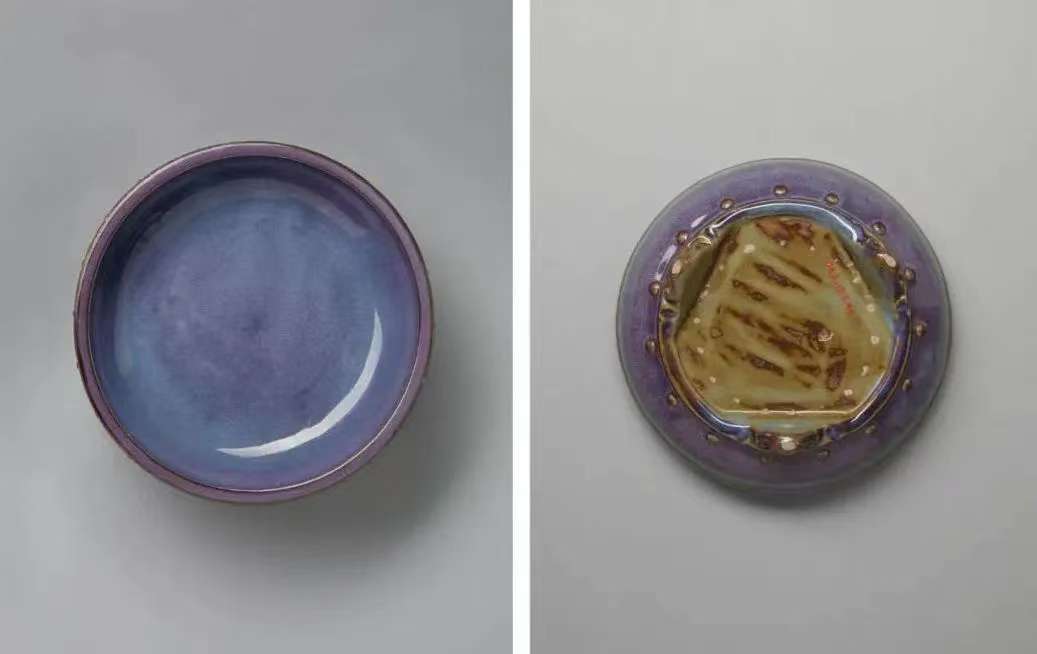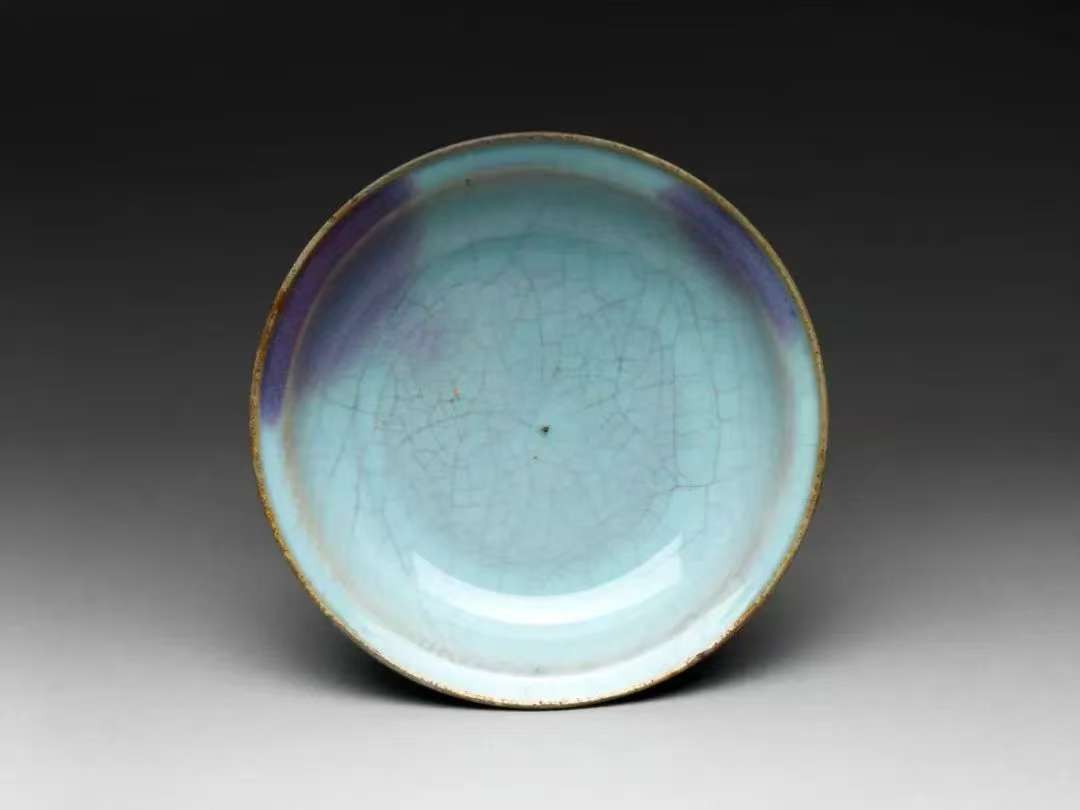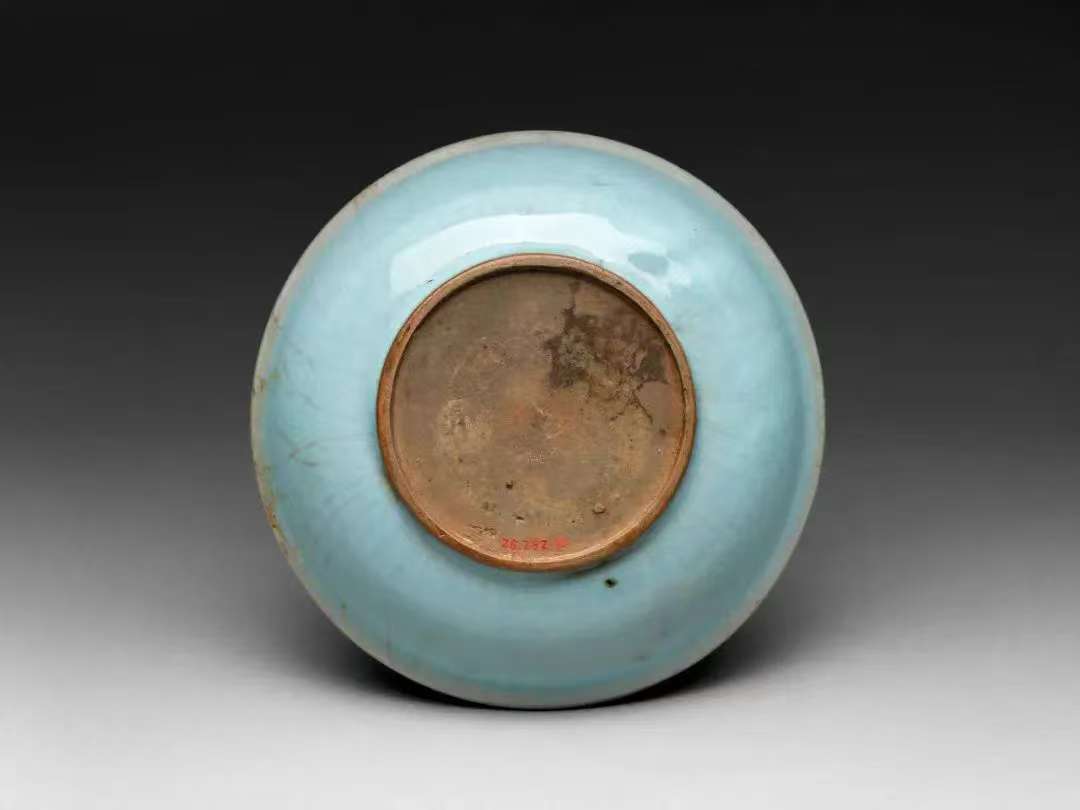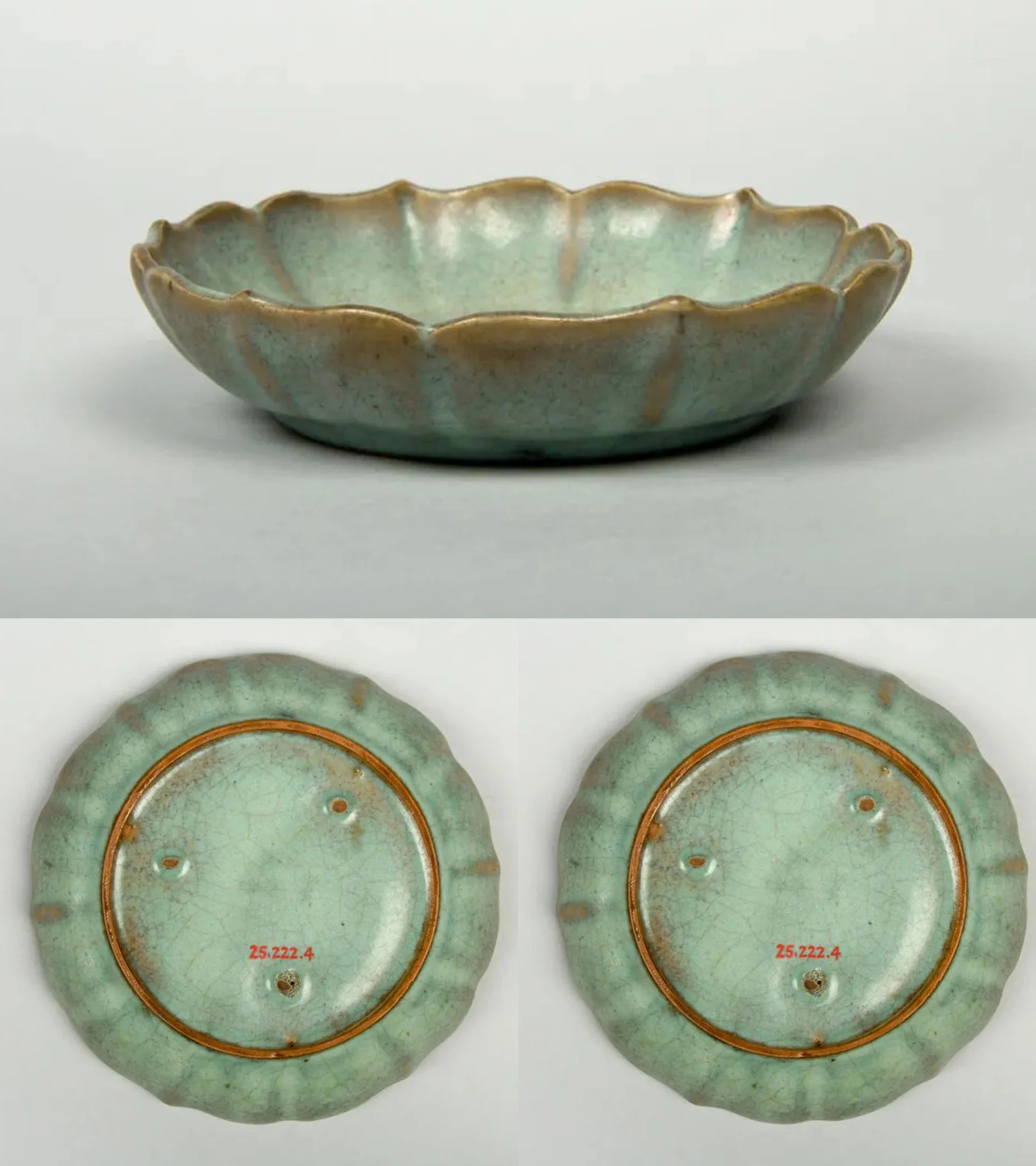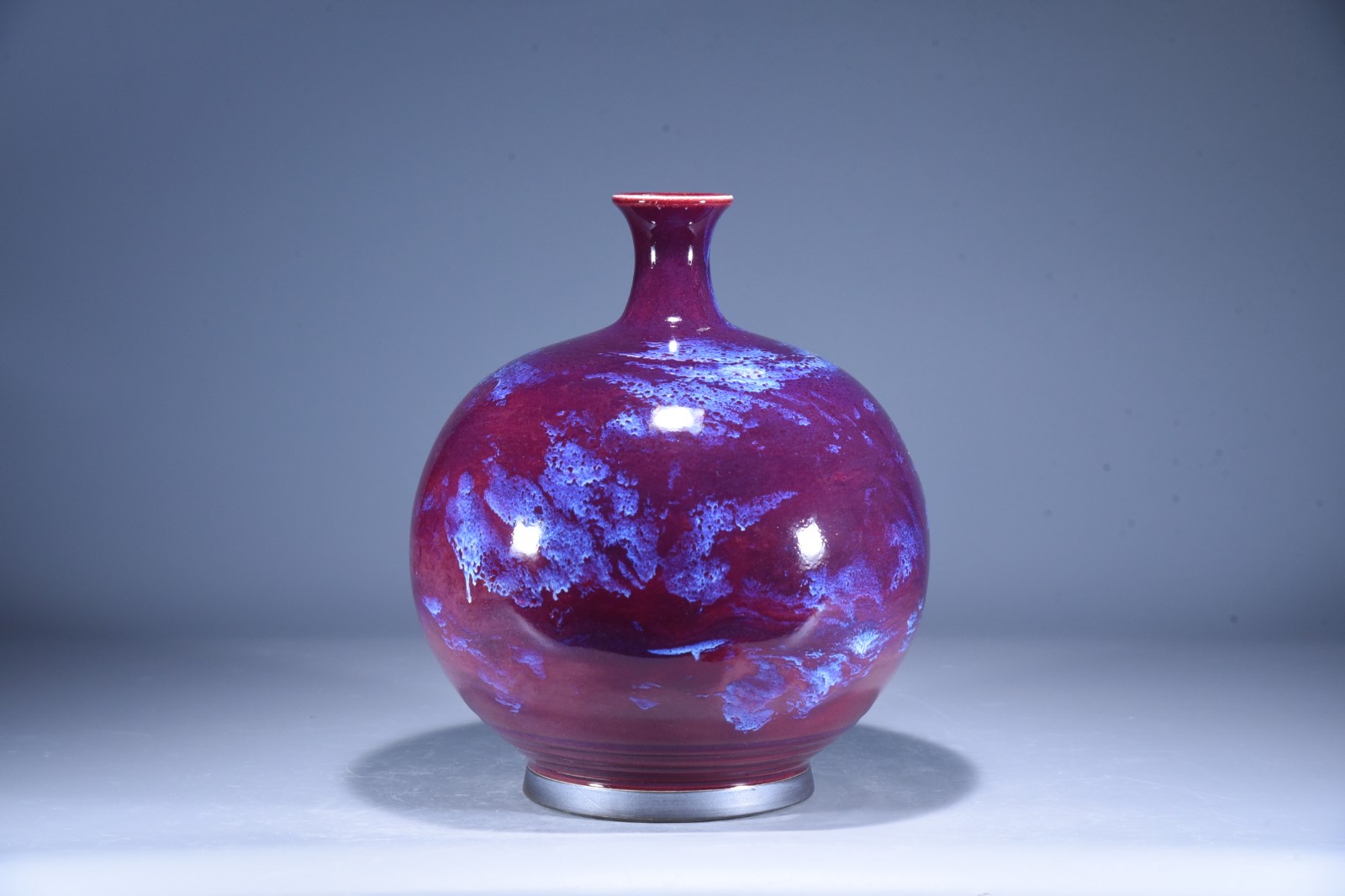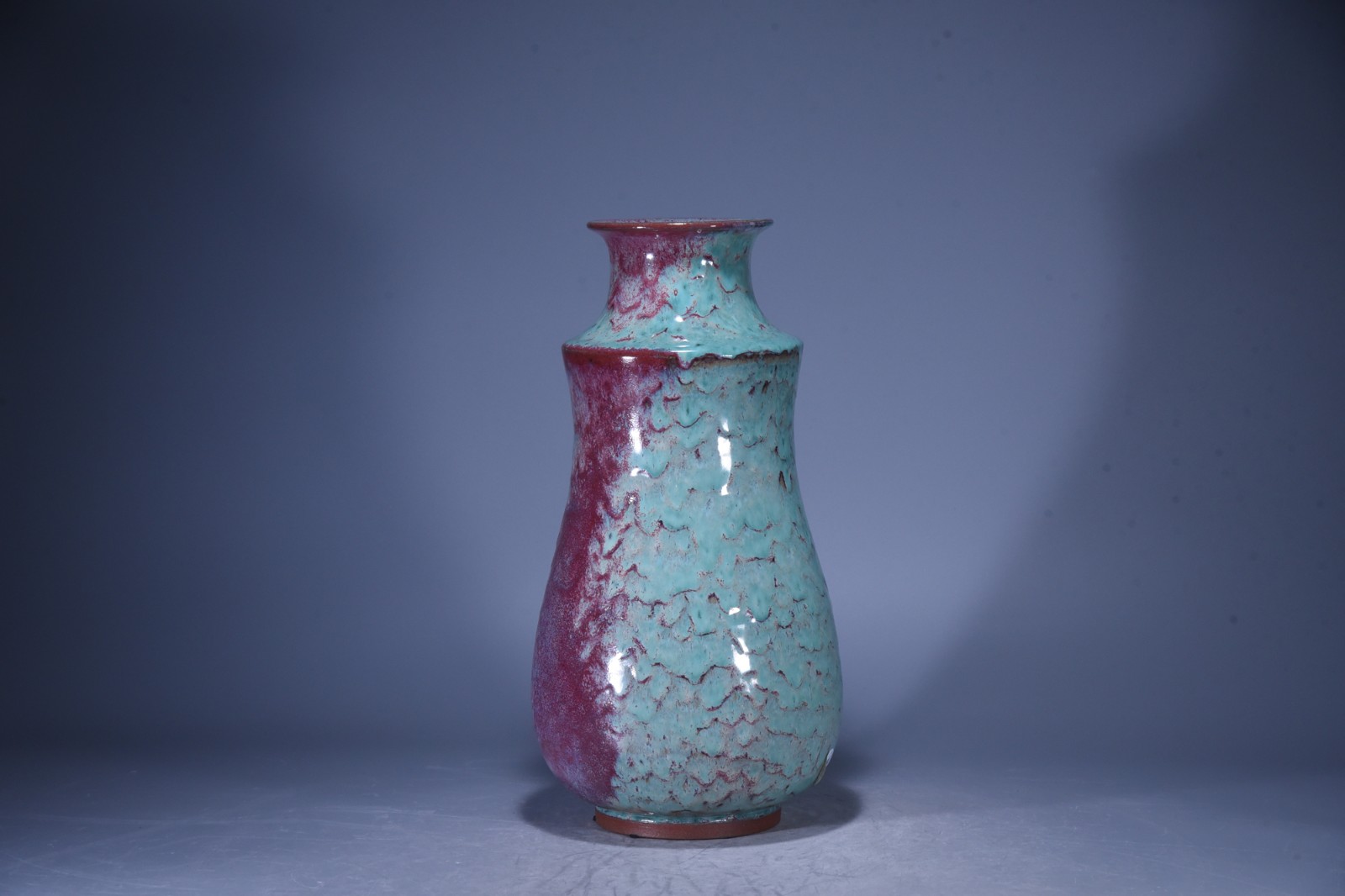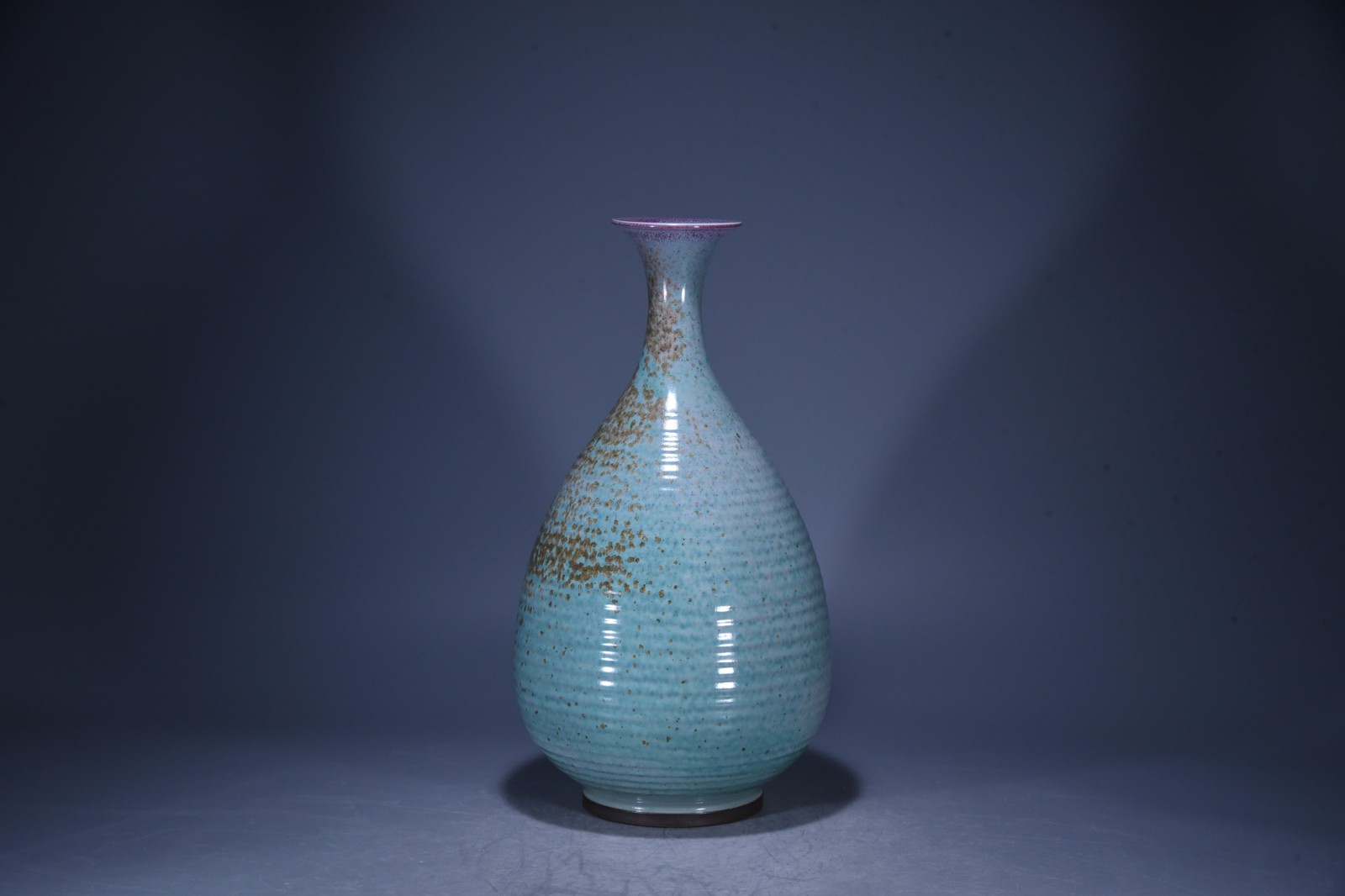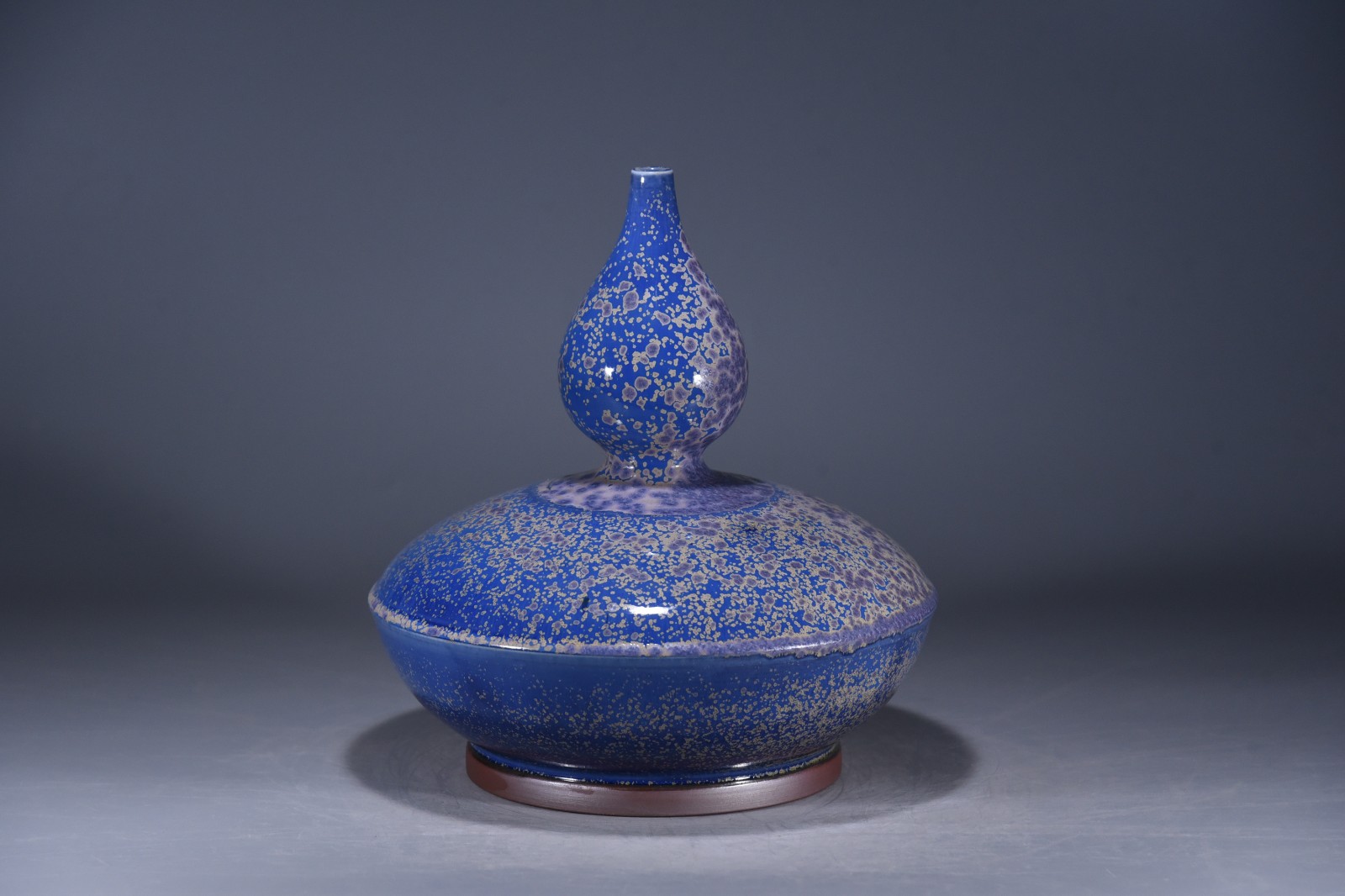Jun kilns are one of the most famous types of porcelain in ancient China, beginning in the Tang Dynasty and becoming imperial porcelain in the Song Dynasty, when they were known as one of the “Five Famous Kilns” of the Song Dynasty, and were often used to make flower pots, vases and other objects for use in the palace. The technology of the kilns declined after the Yuan Dynasty, but the artisans in Yuzhou, Henan Province, are still passing on their skills today. Today there are fewer than a hundred pieces of well-preserved Song dynasty porcelain in the world, each of which is a museum treasure.
Jun porcelain is known for its unique “kiln change” effect – when fired, the porcelain produces unexpected color changes such as sky blue and purple-red, making each piece as unique as the clouds in the sky. Craftsmen apply a copper-containing glaze to the body, and after firing at a high temperature of about 1,300 degrees Celsius, the glaze melts and flows, naturally changing to form different shades of color. Sometimes there are fine “earthworm lines” or ice-crack-like textures, which are natural traces of “kiln changes”. The glaze of Jun porcelain is thick and heavy, and the surface is as warm and smooth as jade.
The kiln change technology of Jun kiln reflects the wisdom of ancient China to “follow nature”. Although the craftsmen can control the firing, the final color and texture are still determined by nature, and this “unity of heaven and mankind” concept makes Jun porcelain go beyond ordinary handicrafts. 2008, the Jun porcelain technique was listed in China’s national intangible cultural heritage, and modern craftsmen innovate on the basis of the tradition, developing new glaze colors such as blue.
Jun kiln porcelain is not only a work of art, but also a symbol of Chinese culture. It bears witness to the wisdom of ancient craftsmen and demonstrates the magical power of nature. Whether it is a thousand-year-old artifact in a museum or a new work by a modern artisan, Jun porcelain tells the eternal story of the “beauty of nature” with its variegated colors.
Jun porcelain antiques at a glance
Modern Porcelain Works
